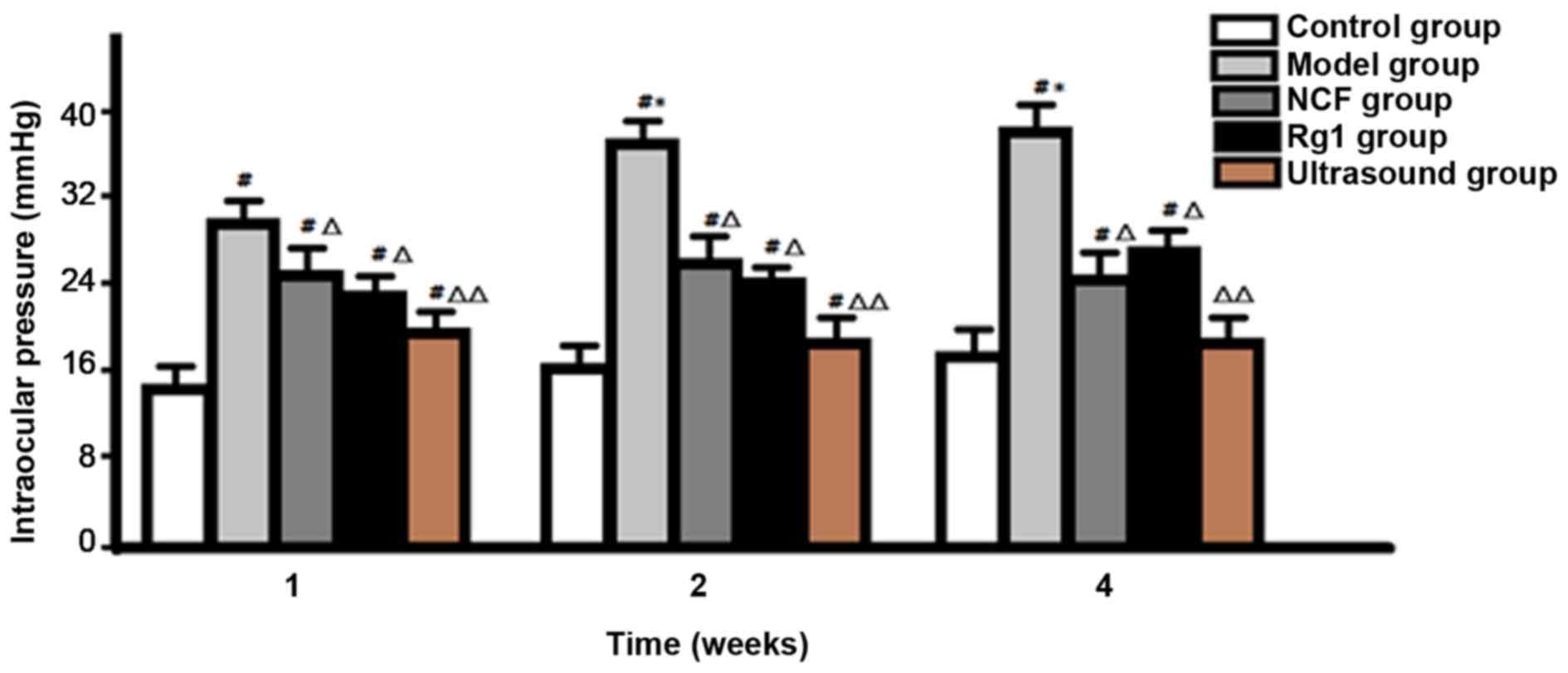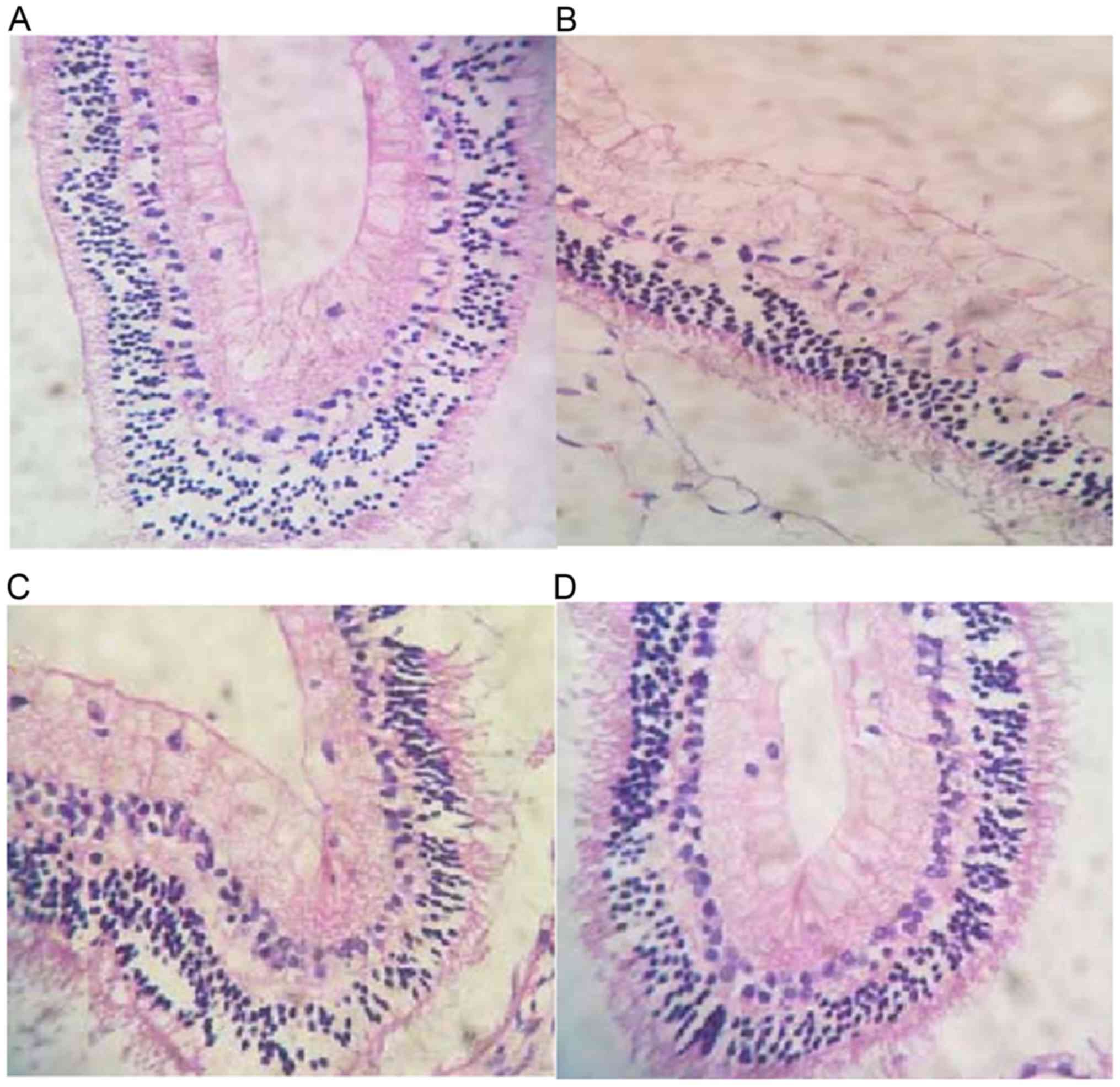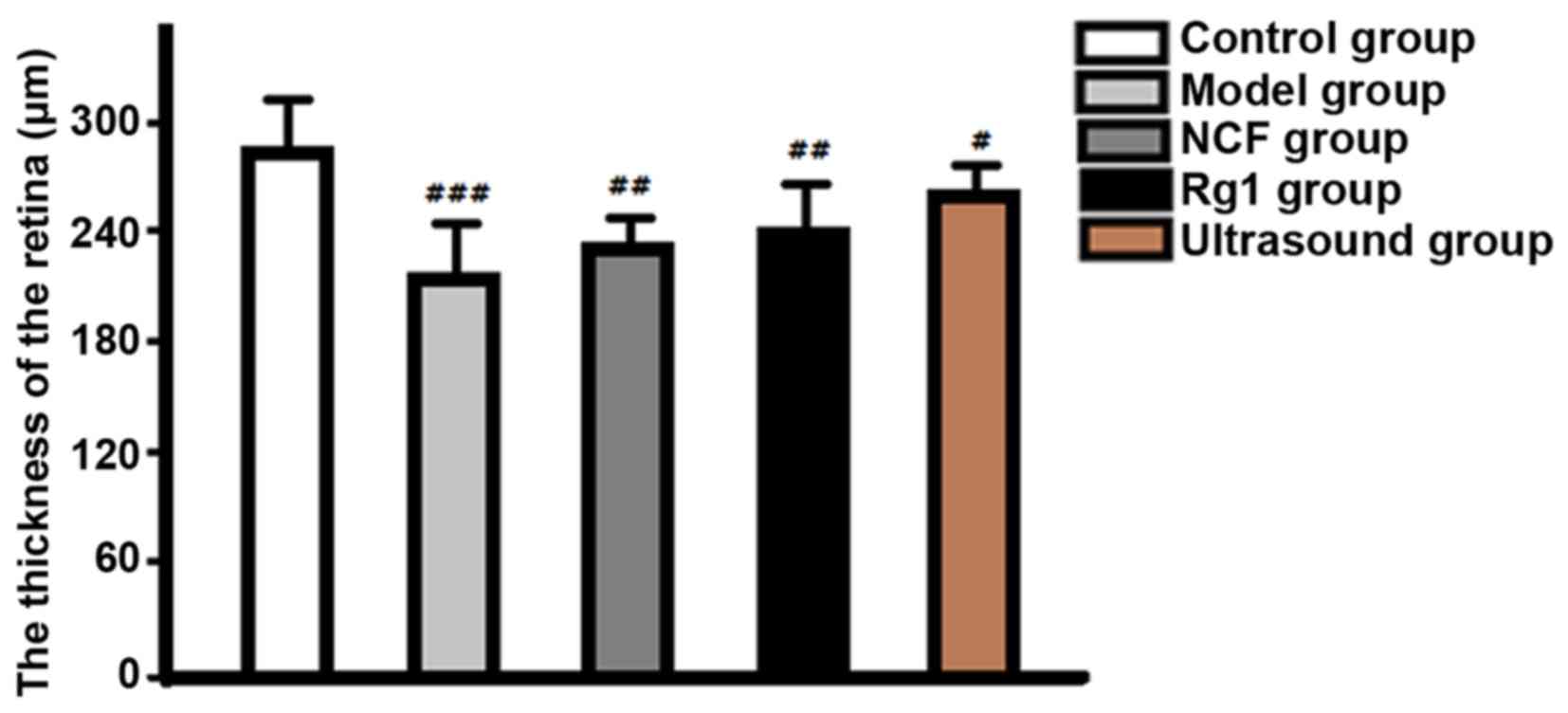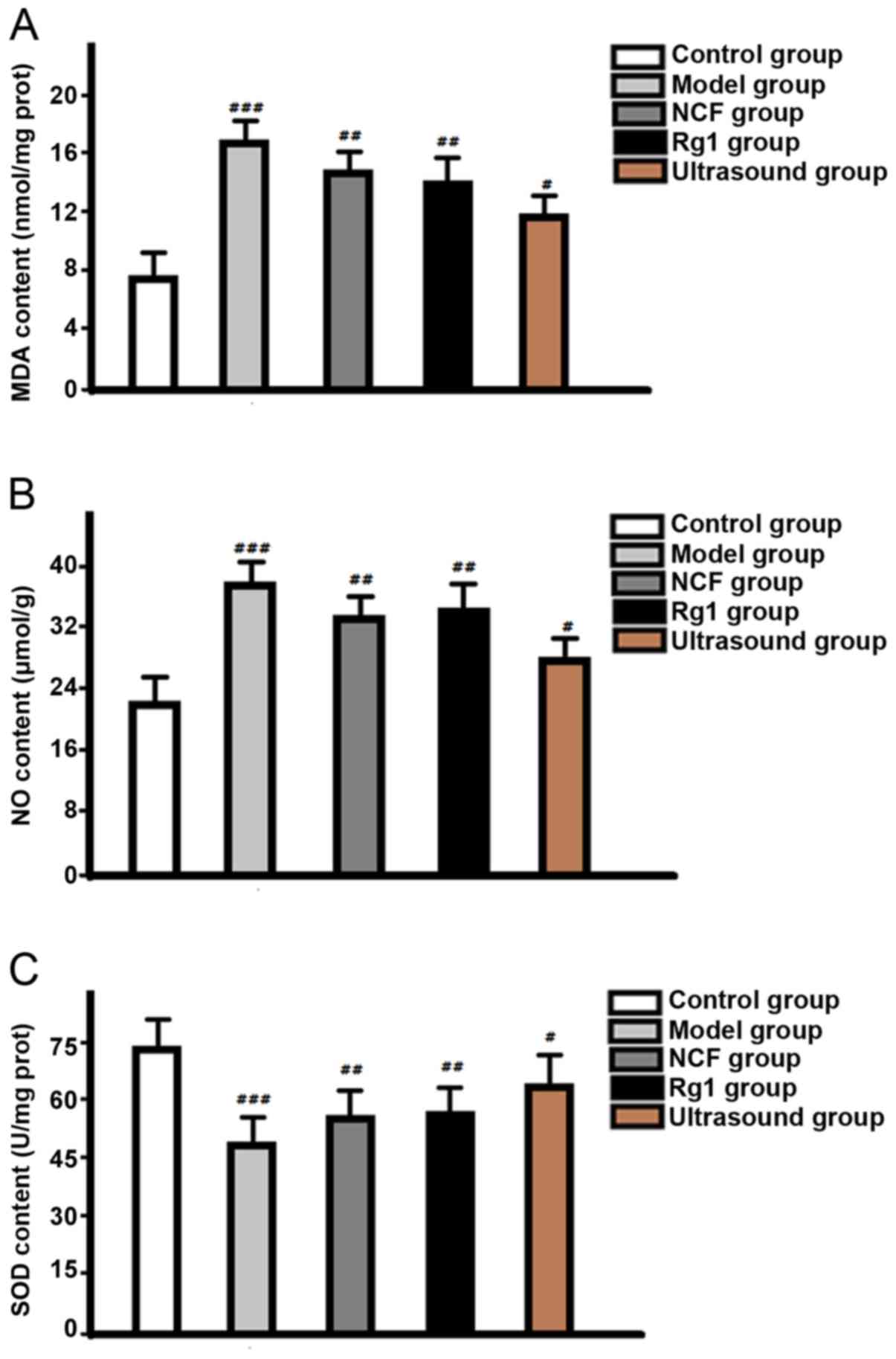Treatment of glaucomatous optic nerve damage using ginsenoside Rg1 mediated by ultrasound targeted microbubble destruction
- Authors:
- Published online on: October 27, 2017 https://doi.org/10.3892/etm.2017.5386
- Pages: 300-304
-
Copyright: © Wang et al. This is an open access article distributed under the terms of Creative Commons Attribution License.
Metrics: Total
Views: 0 (Spandidos Publications: | PMC Statistics: )
Total PDF Downloads: 0 (Spandidos Publications: | PMC Statistics: )
Abstract
The treatment of glaucomatous optic nervedamage using ginsenoside Rg1 mediated by ultrasound targeted microbubbles destruction was evaluated. Thirty healthy New Zealand white rabbits were subjected to injection of 0.3% carbomer solution to establish glaucomatous optic nerve damage model. Rabbits were divided into 5 groups: control group, model group, model group + intravitreal injection of nerve growth factor (NGF) group, model group + intravitreal injection of ginsenoside Rg1 group (Rg1 group), model group + intravitreal injection of ginsenoside Rg1 + ultrasound microbubble group (ultrasound group), model group + ultrasound targeted microbubble destruction (ultrasound group). Intraocular pressures were compared at 1, 2 and 4 weeks after model establishment. Rabbits were sacrificed 4 weeks after model establishment to collect retinal tissue for H&E staining. Histological changes were observed and the retinal thickness was measured. Contents of malondialdehyde (MDA), superoxide dismutase (SOD) and nitric oxide (NO) were measured by ELISA. Intraocular pressure was significantly higher in model group than in control group at 1 week (P<0.05). Intraocular pressure was significantly lower in the ultrasound group than in NGF group and Rg1 group at all time-points (P<0.05). The number of ganglion cells in model group was decreased significantly. Number of nuclear layer cells was significantly reduced. Thickest retina was found in control group and model group was the thinnest (P<0.05). Contents of MDA and NO in model group were significantly higher than those in NCF group and Rg1 group. SOD content in control group was higher than that in ultrasound group and model group (P<0.05). In conclusion, treatment of glaucomatous optic nerve damage using ginsenoside Rg1 mediated by ultrasound targeted microbubble destruction can reduce the level of oxidative stress, relieve intraocular pressure and reduce ganglion cell damage.













